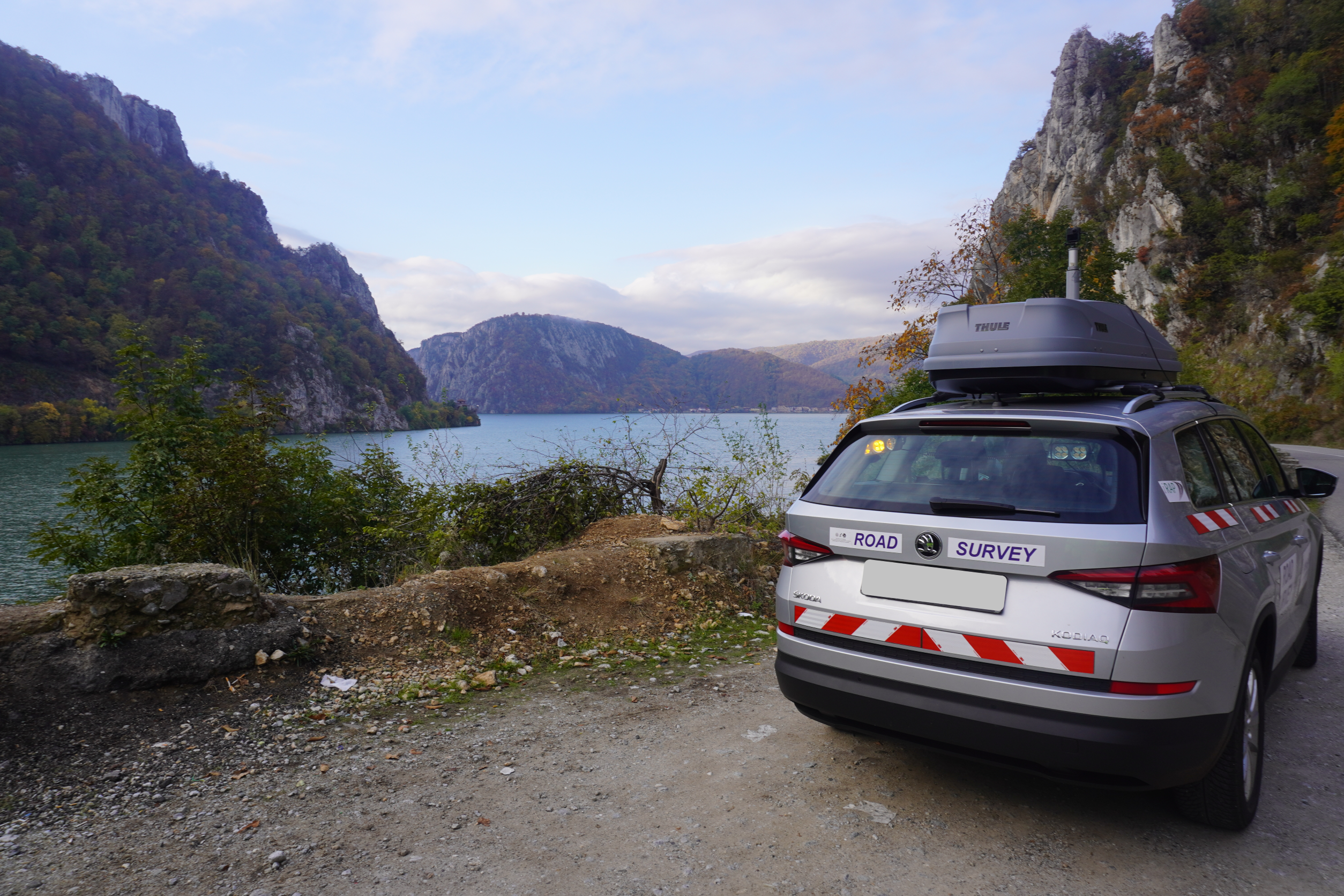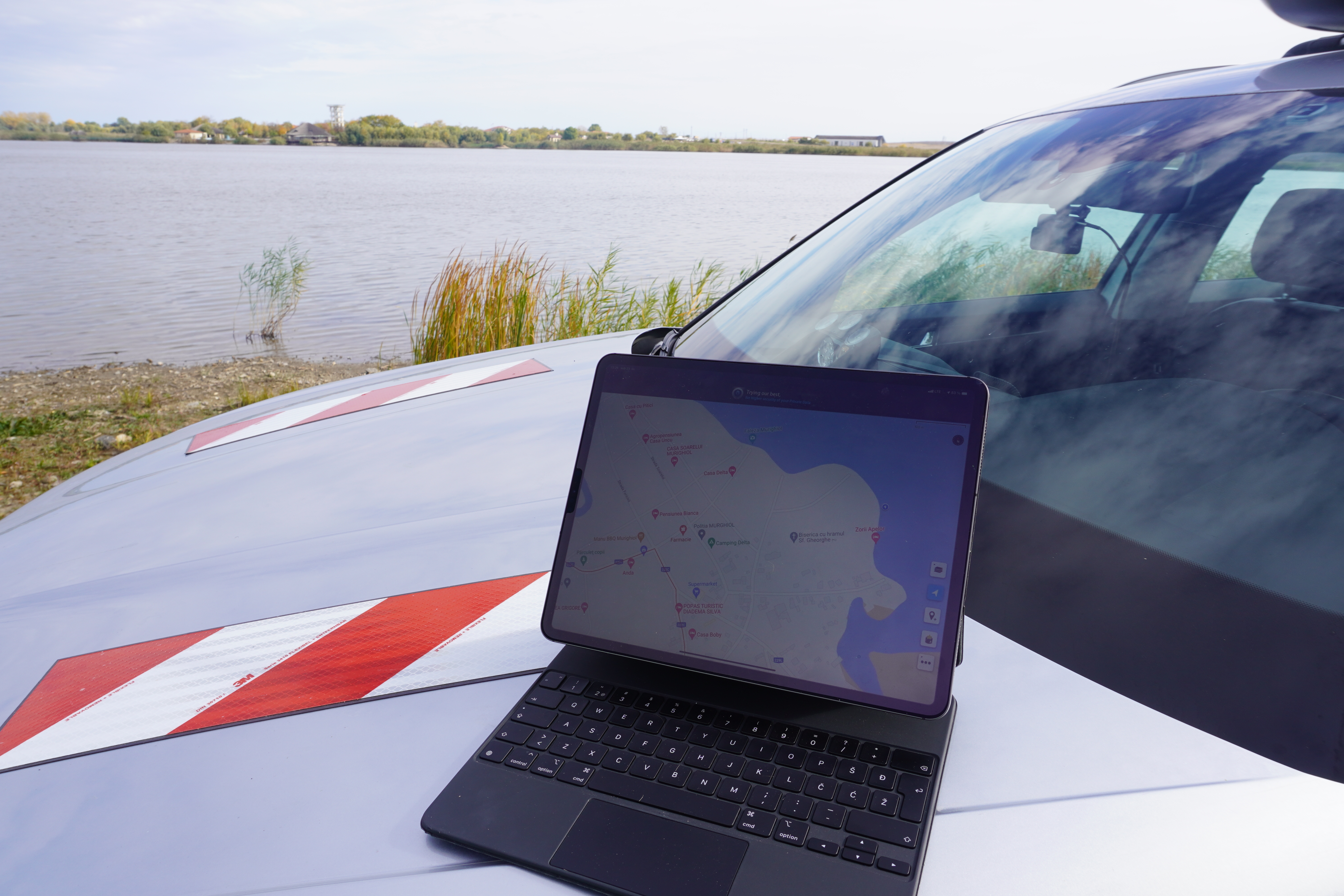SABRINA - SAFETY INSPECTIONS OF BICYCLE ROUTES IN ROMANIA
21-12-2021
The weather conditions were still favourable at the end of October, so after concluding safety route inspection in Bulgaria, the team from the SABRINA project partner the University of Zagreb, Faculty of Transport and Traffic Sciences (FPZ) visited Romania.
Raluca Fiser from Green Revolution Association from Romania (the SABRINA project partner) believes “Romania has a huge potential for cycling tourism. It is slowly evolving but it is still far from its potential. We have an amazingly beautiful country, perfect to be discovered by bike. But I guess the biggest obstacle is the lack of safe cycling infrastructure.” The safety assessment of the EuroVelo bicycle routes crossing SABRINA project partners’ countries is one of the main project activities. In Romania, there are two EuroVelo routes: EuroVelo 6 (Atlantic – Black Sea) and EuroVelo 13, which follows the former Iron Curtain areas. As well as in Bulgaria, for now, there is no official ECF National EuroVelo Coordination Centre nor Coordinator in Romania and the EuroVelo routes are under development.
The FPZ team surveyed 553 km of the EuroVelo 6 between cities Brăila, Tulcea and Constanța (east and south-east of the country) and EuroVelo 13 between Maglavit, Drobeta-Turnu Severin and Moldova Nouă (south-west of Romania). Leonid Ljubotina from the FPZ team summed up his impressions after the work done in Romania: “Romanian EuroVelo routes are mostly drawn upon local roads between settlements, passing by numerous sightseeing locations which make the route really attractive. Driving on local roads means also that the pavement quality is quite good for cycling. At the same time, there are stretches of road which could reduce the riding pleasure as high vehicle flows and speeds could upset some cyclists. Similarly, to the routes in Bulgaria, dedicated biking infrastructure is really scarce and cycle route signage is almost non-existent.”


George Ursachi from the Agile Transport Analysis S.R.L. (the SABRINA project partner) shared with us his view on the state of cycling infrastructure in his country: "In Romania, the cycling culture as it is emerging in the western countries is in its infancy or even earlier stages. Larger, more developed cities, especially located in the western part of Romania started to develop some cycling infrastructure, but the phenomenon, even there, is in early stages, dispersed, uncorrelated to the real needs, and mostly dedicated to leisure and tourism. In the rural areas, and especially in the least economically developed areas, cycling infrastructure is almost non-existent. Although the elderly population in these rural areas used to have and still uses bicycles as a transportation means to commute to work, they don’t expect dedicated cycling infrastructure. However, when someone explains to them how safe cycling infrastructure should and could look like, they are excited and would love to be able to cycle on safe bicycle routes. For now, most of the routes in Romania are shared with the motorised traffic, on roads with poorly maintained verges, and margins, with many hazards and risk increasing elements such as poor visibility, road cracks, lack of signage, lack of markings, no lights, and no guardrails. Most of the time cyclists need to ride on the sidewalks, footpaths, pavements or pathways where they exist, to avoid colliding with motorised traffic, which is pretty heavy and driving at high speeds.”
George Ursachi sees some promising developments in the cities, where “a few nice initiatives are starting to take shape.” However, he added that most of the time the (painted) routes are blocked by parked vehicles or used by motorised vehicles if they are not protected. He believes the development of more cycling in Romania is possible, but “we need to put a lot more effort to invest in safe cycling infrastructure which is a pre-condition for more cycling. At the same time, a focus needs to be given to educating all participants in traffic that mutual respect is needed.”
Raluca Fiser and George Ursachi both agree there is a silver lining for Romania as new infrastructure developments need to incorporate cycling routes as a condition of eligibility to attract government or community funds. They are both very happy their organizations are part of the SABRINA project since one of the key elements on the way to more cycling as a daily and leisure activity is a safe cycling infrastructure. At the end of the safety route inspections in Romania George added: “Let’s hope we will see an 'explosion' of cycling infrastructure soon, and let’s make sure we take care of the awareness-raising and education tasks meanwhile."
The safety assessment that will follow will include more than 50 road design features that are known to influence the likelihood of accidents and the severity of injuries to road users and cyclists in mixed traffic. Every relevant design feature recorded during the route inspections is assessed in accordance with the existing protocols of the Road Assessment Program (RAP) (iRAP and CycleRAP) and the European Certification Standard (ECS) developed by the ECF. The results, including the iRAP Star Rating of the routes, will show how safe the respective routes are for cyclists and what could be done to improve their safety. Stay tuned for more safety inspection news from other SABRINA project countries and for the results of our fieldwork.
Photos: University of Zagreb, Faculty of Transport and Traffic Sciences



